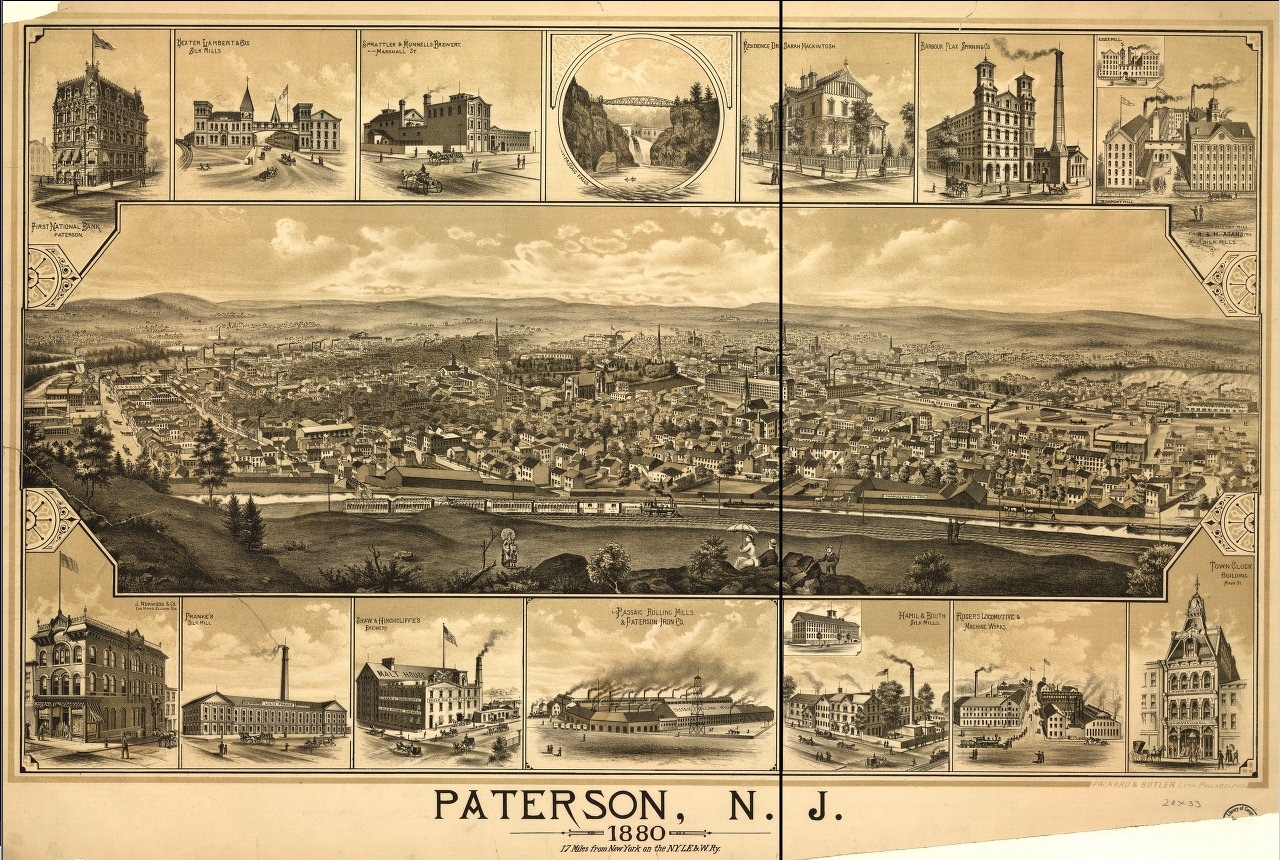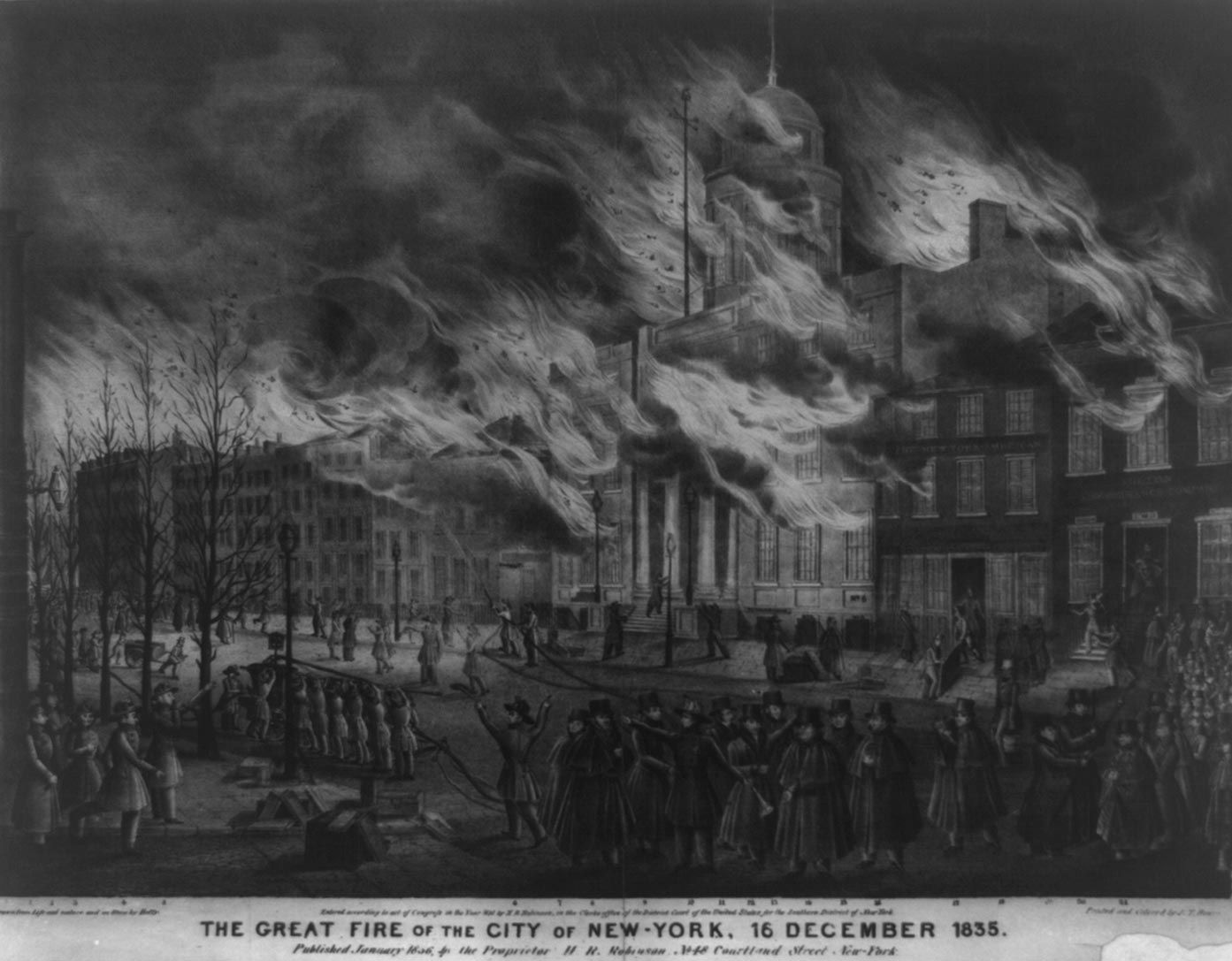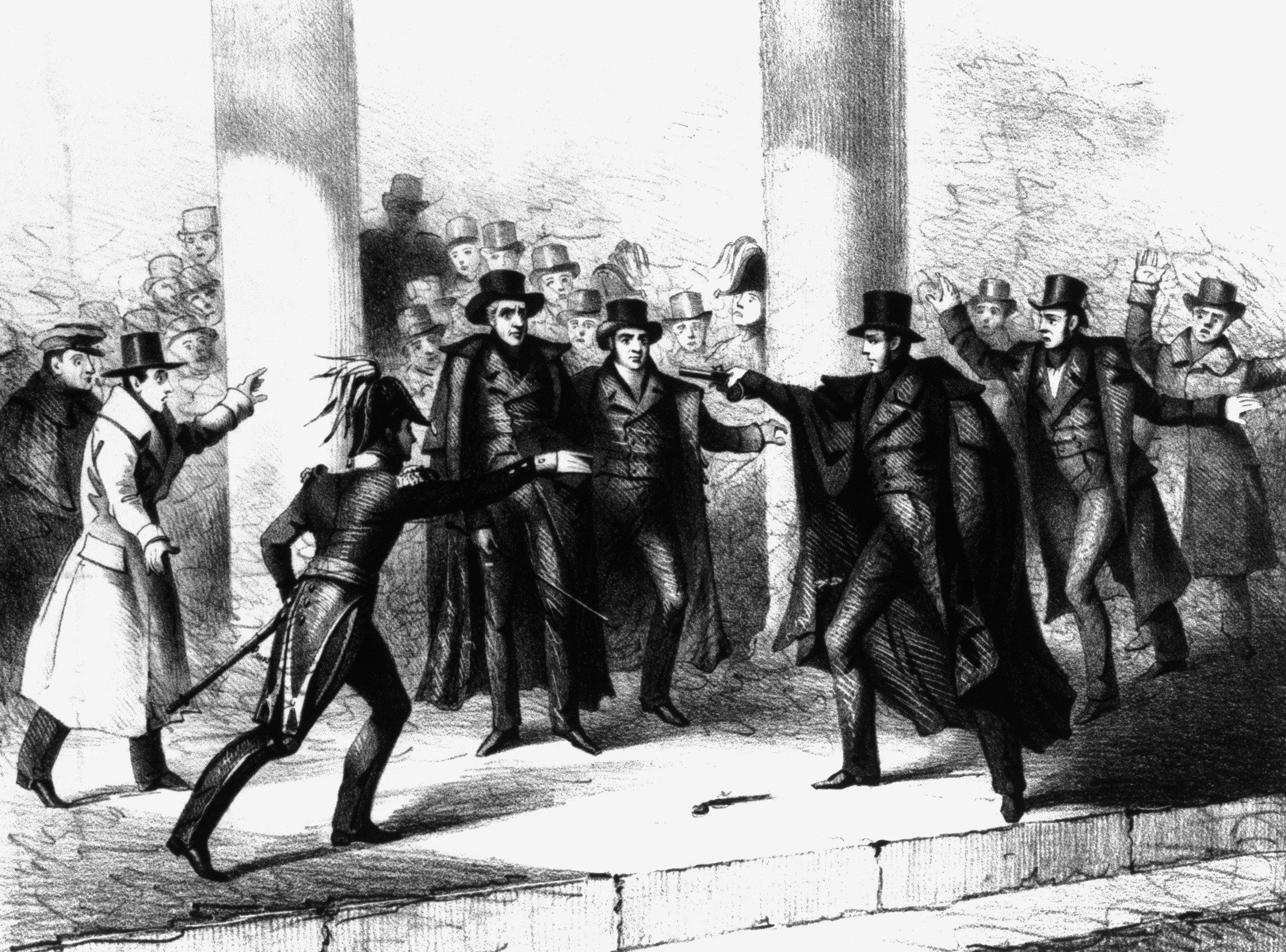|
1835 Paterson Textile Strike
The 1835 Paterson textile strike took place in Paterson, New Jersey, involved more than 2,000 workers from 20 textile mills across the city. The strikers, many of whom were children and of Irish descent, were seeking a reduction in daily working hours from thirteen and a half hours to eleven hours. Support from other workers in Paterson and nearby cities allowed the strikers to sustain their efforts for two weeks. Employers refused to negotiate with the workers, and were able to break the strike by unilaterally declaring a reduction in work hours to twelve hours daily during the week and nine hours on Saturdays. Many leaders of the strike and their family were blacklisted by employers in Paterson after it ended. Background As the Industrial Revolution got under way, the 1830s were a time of significant labor unrest in the United States. Workers throughout the country had over the previous decade sought to secure shorter working days and higher wages, but many of these efforts and st ... [...More Info...] [...Related Items...] OR: [Wikipedia] [Google] [Baidu] |
Paterson, New Jersey
Paterson ( ) is the largest city in and the county seat of Passaic County, in the U.S. state of New Jersey.New Jersey County Map New Jersey Department of State. Accessed July 10, 2017. As of the 2020 United States census, its population was 159,732, rendering it New Jersey's third-most-populous city. The |
Labor Disputes In New Jersey
Labour or labor may refer to: * Childbirth, the delivery of a baby * Labour (human activity), or work ** Manual labour, physical work ** Wage labour, a socioeconomic relationship between a worker and an employer ** Organized labour and the labour movement, consisting principally of labour unions ** Labour Party or Labor Party, a name used by several political parties Literature * ''Labor'' (journal), an American quarterly on the history of the labor movement * '' Labour/Le Travail'', an academic journal focusing on the Canadian labour movement * ''Labor'' (Tolstoy book) or ''The Triumph of the Farmer or Industry and Parasitism'' (1888) Music * ''Labour'' (song), 2023 single by Paris Paloma Places * La Labor, Honduras * Labor, Koper, Slovenia Other uses * ''Labor'' (album), a 2013 album by MEN * Labor (area), a Spanish customary unit * "Labor", an episode of TV series '' Superstore'' * Labour (constituency), a functional constituency in Hong Kong elections * Labors, ... [...More Info...] [...Related Items...] OR: [Wikipedia] [Google] [Baidu] |
1835 In New Jersey
Events January–March * January 7 – anchors off the Chonos Archipelago on her second voyage, with Charles Darwin on board as naturalist. * January 8 – The United States public debt contracts to zero, for the only time in history. * January 24 – Malê Revolt: African slaves of Yoruba Muslim origin revolt in Salvador, Bahia. * January 26 – Queen Maria II of Portugal marries Auguste de Beauharnais, 2nd Duke of Leuchtenberg, in Lisbon; he dies only two months later. * January 26 – Saint Paul's in Macau largely destroyed by fire after a typhoon hits. * January 30 – An assassination is attempted against United States President Andrew Jackson in the United States Capitol (the first assassination attempt against a President of the United States). * February 1 – Slavery is abolished in Mauritius. * February 20 – 1835 Concepción earthquake: Concepción, Chile, is destroyed by an earthquake; the resulting tsunami destroys the neighboring city of T ... [...More Info...] [...Related Items...] OR: [Wikipedia] [Google] [Baidu] |
History Of Paterson, New Jersey
Paterson ( ) is the largest city in and the county seat of Passaic County, in the U.S. state of New Jersey.New Jersey County Map . Accessed July 10, 2017. As of the , its population was 159,732, rendering it New Jersey's third-most-populous city. The [...More Info...] [...Related Items...] OR: [Wikipedia] [Google] [Baidu] |
Child Labor In The United States
Child labor in the United States was a common phenomenon across the economy in the 19th century. Outside agriculture, it gradually declined in the early 20th century, except in the South which added children in textile and other industries. Child labor remained common in the agricultural sector until compulsory school laws were enacted by the states. In the North state laws prohibited work in mines and later in factories. A national law was passed in 1916 but it was overturned by the Supreme Court in 1918. A 1919 law was also overturned. In the 1920s an effort to pass a constitutional amendement failed, because of opposition from the South and from Catholics. Outside of farming child labor was steadily declining in the 20th century and the New Deal in 1938 finally ended child labor in factories and mines. Child labor has always been a factor in agriculture and that continues into the 21st century. History Colonial and early national In an overwhelmingly rural society, farmers ... [...More Info...] [...Related Items...] OR: [Wikipedia] [Google] [Baidu] |
History Of Youth
History (derived ) is the systematic study and the documentation of the human activity. The time period of event before the History of writing#Inventions of writing, invention of writing systems is considered prehistory. "History" is an umbrella term comprising past events as well as the memory, discovery, collection, organization, presentation, and interpretation of these events. Historians seek knowledge of the past using historical sources such as written documents, oral accounts, art and material artifacts, and ecological markers. History is not complete and still has debatable mysteries. History is also an Discipline (academia), academic discipline which uses narrative to describe, examine, question, and analyze past events, and investigate their patterns of cause and effect. Historians often debate which narrative best explains an event, as well as the significance of different causes and effects. Historians also debate the historiography, nature of history as an end in ... [...More Info...] [...Related Items...] OR: [Wikipedia] [Google] [Baidu] |
Textile And Clothing Labor Disputes In The United States
Textile is an umbrella term that includes various fiber-based materials, including fibers, yarns, filaments, threads, different fabric types, etc. At first, the word "textiles" only referred to woven fabrics. However, weaving is not the only manufacturing method, and many other methods were later developed to form textile structures based on their intended use. Knitting and non-woven are other popular types of fabric manufacturing. In the contemporary world, textiles satisfy the material needs for versatile applications, from simple daily clothing to bulletproof jackets, spacesuits, and doctor's gowns. Textiles are divided into two groups: Domestic purposes onsumer textilesand technical textiles. In consumer textiles, aesthetics and comfort are the most important factors, but in technical textiles, functional properties are the priority. Geotextiles, industrial textiles, medical textiles, and many other areas are examples of technical textiles, whereas clothing and f ... [...More Info...] [...Related Items...] OR: [Wikipedia] [Google] [Baidu] |
1835 Labor Disputes And Strikes
Events January–March * January 7 – anchors off the Chonos Archipelago on her second voyage, with Charles Darwin on board as naturalist. * January 8 – The United States public debt contracts to zero, for the only time in history. * January 24 – Malê Revolt: African slaves of Yoruba Muslim origin revolt in Salvador, Bahia. * January 26 – Queen Maria II of Portugal marries Auguste de Beauharnais, 2nd Duke of Leuchtenberg, in Lisbon; he dies only two months later. * January 26 – Saint Paul's in Macau largely destroyed by fire after a typhoon hits. * January 30 – An assassination is attempted against United States President Andrew Jackson in the United States Capitol (the first assassination attempt against a President of the United States). * February 1 – Slavery is abolished in Mauritius. * February 20 – 1835 Concepción earthquake: Concepción, Chile, is destroyed by an earthquake; the resulting tsunami destroys the neighboring city of T ... [...More Info...] [...Related Items...] OR: [Wikipedia] [Google] [Baidu] |
1835 In The United States
Events from the year 1835 in the United States. Incumbents Federal Government * President: Andrew Jackson ( D-Tennessee) * Vice President: Martin Van Buren ( D-New York) * Chief Justice: John Marshall (Virginia) * Speaker of the House of Representatives: John Bell ( W-Tennessee) (until March 4), James K. Polk ( D-Tennessee) (starting December 7) * Congress: 23rd (until March 4), 24th (starting March 4) Events * January 8 – The Federal Government declares that Andrew Jackson paid off the national debt for the first and only time. * January 30 – Richard Lawrence unsuccessfully tries to assassinate President Andrew Jackson in the United States Capitol; this is the first assassination attempt against a President of the United States. * March 31 – Hostile action opens the Toledo War between the State of Ohio and the Michigan Territory over the city of Toledo and the Toledo Strip. * May 6 – James Gordon Bennett, Sr. publishes the first issue of ... [...More Info...] [...Related Items...] OR: [Wikipedia] [Google] [Baidu] |
1913 Paterson Silk Strike
The 1913 Paterson silk strike was a work stoppage involving silk mill workers in Paterson, New Jersey. The strike involved demands for establishment of an eight-hour day and improved working conditions. The strike began in February 1913, and ended five months later, on July 28. During the course of the strike, approximately 1,850 strikers were arrested, including Industrial Workers of the World (IWW) leaders Bill Haywood and Elizabeth Gurley Flynn.The Samuel Gompers Papers. Background Paterson's strike was part of a series of industrial strikes in the garment and textile industries of the American East from 1909 to 1913. The participants of these strikes were largely immigrant factory workers from southern and eastern Europe. Class division, race, gender, and manufacturing expertise all caused internal dissension among the striking parties and this led many reformist intellectuals in the Northeast to question their effectiveness. A major turning point for these labor movem ... [...More Info...] [...Related Items...] OR: [Wikipedia] [Google] [Baidu] |
1835 Washington Navy Yard Labor Strike
The Washington Navy Yard labor strike of 1835 is considered the first strike of federal civilian employees. The strike began on Wednesday July 31, 1835, and ended August 15, 1835. The strike supported the movement advocating a ten-hour workday and redressing grievances such as newly imposed lunch-hour regulations. The strike failed in its objectives for two reasons, the Secretary of the Navy refused to change the shipyard working hours and the loss of public support due to the involvement of large numbers of mechanics and laborers in the race riot popularly known as the Snow Riot or Snow Storm. Historical background 1835 was an important year for American labor. Workers, particularly in Boston, Philadelphia, New York City, and Washington D.C. petitioned for higher wages, better working conditions, and a ten-hour workday. In Washington D.C., from early in the nineteenth century, workers agitated for a reduction in the arduous twelve-hour workday. At the Navy Yard, employment conditi ... [...More Info...] [...Related Items...] OR: [Wikipedia] [Google] [Baidu] |


.jpg)

.jpg)




.jpg)